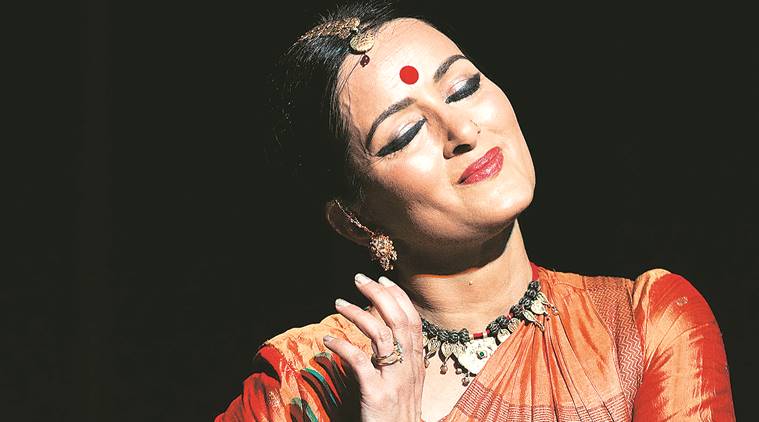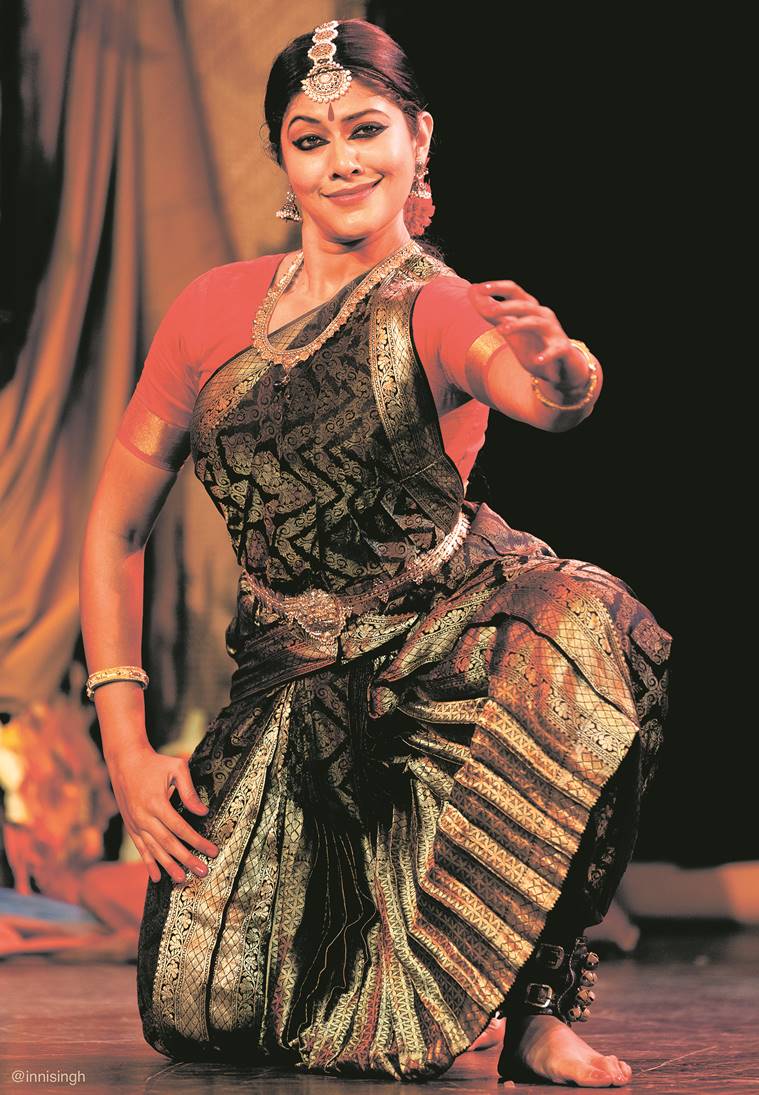
Dressed in a saffron costume acclaimed, as Bharatanatyam exponent Vidhya Subramanian took to the stage at Stein Auditorium in India Habitat Centre on Wednesday evening, to recite the cheer haran of Draupadi from the pages of the Mahabharata, the audience was little prepared for what lay ahead. With her feet wrapped in a sari, the moment her legs went up in the air as she lay on the ground, they trembled with fear as invisible men assaulted her. The audience’s eyes froze when she echoed Nirbhaya’s name minutes later. She was then heard saying, “We are Draupadi. Draupadi is us”. The act titled Still I Rise premiered at Palo Alto in California in May last year.
Using Bharatanatyam, theatre, spoken word and music, Subramanian transported Draupadi into today’s world. Swirling around the stage like a whirling dervish and displaying impressive footwork, she declared “ab govind na ayenge” in times of distress, and juxtaposed it with Maya Angelou’s timeless poem Still I Rise. After two years of research, Subramanian started the preparations by letting her body fall on the floor and crying endlessly during the rehearsals. She says, “I wanted this woman to be faceless and nameless, much like every woman who is raped or violated. The violator never looks at the face, it is never an act of making love. It is violence against the woman. I wanted the audience to be uncomfortable, squirm in their seats and feel this is horrible. The face is not important, the feet speak volumes.”

Subramanian also addresses Sita in the 75-minute act with dialogues where the central character wonders why is she “called a slut” for marrying five husbands but Sita is considered the epitome of loyalty. “I think Draupadi is one of the most flawed heroines with a lot of depth. She is not like Sita, where a lot of things were handed over to her on a silver platter and life was good, except towards the end. Draupadi, on the contrary, faced challenges throughout her life, from the moment she got married till the end — even in her death, she walked up to the Himalayas and was later ditched by all her husbands. This is the woman of today,” says Subramanian.
The sari also becomes the artiste’s vehicle of raising pertinent questions — is it a symbol of honour or a binding trap under the patriarchal set-up? “How often do we say that a woman was raped because of what she wore. The sari is one of the most traditional garments and women wearing it are still violated,” she says.
The fact that Draupadi is flawed and never let challenges faze her, intrigues Subramanian. “She never complained or cried ‘why me?’ She held the Pandavas together. I could relate to that aspect as a woman. All women are beautiful, flawed, imperfect and able to face any challenge thrown our way,” says Subramanian, who also made a conscious choice to end her act on a note of empowerment. “There is hope and we don’t need to feel dejected,” she adds.
The evening also saw another performance. It began with Dakshina Vaidyanathan Baghel’s performance Shoorpanakha – The Story Only She Nose, a heart-rending tale of Ravana’s sister Shoorpanakha, often portrayed as a crooked, immoral demoness. Famous for her innovative compositions in Bharatanatyam, such as Newton’s law of Karma and Cleopatra, in Baghel’s version — for which she referred to many versions of the Ramayana from Sri lanka, Cambodia, Thailand and Singapore — Shoorpanakha is like any other girl. Named Meenakshi, the one who has eyes of a fish, she swims among the fishes in the island country of Sri Lanka, ties rakhi to Ravana and leads a happily married life with Dushtabuddhi, before tragedy struck.
Jealous of her husband’s intelligence, Ravana had him killed. Baghel’s deft hand movements traced the gripping grief surrounding the arrival of her husband’s dead body, using her fingers in thin air. Baghel is heard saying, “My own brother made me a widow. My own brother killed the love of my life.” From that moment she turned into Shoorpanakha, full of fury, grief and hatred, who went to Bharat. It is here that she saw Ram and plotted to entice him to mutilate her, so that Ravana and Ram go at loggerheads at each other, hoping that the best man (Ram) wins. Delhi-based Baghel, 29, says, “The way she has been described in the Ramayana may not have been how she was. I tried to show that she was an ordinary person before she turned into this crazy person after the traumatic event in her life.”
Granddaughter of Padma Shri Saroja Vaidyanathan, Baghel succeeds in her endeavour to portray Shoorpanakha as a devoted wife, a quality usually associated with Sita. “This was Shoorpanakha’s revenge plot for the death of her husband and she used Ram, Sita and everybody else for it. The entire Ramayana is not a story of good over evil but a crime thriller where she manipulated everything and it is a perfect crime. She simply sat back and watched.”